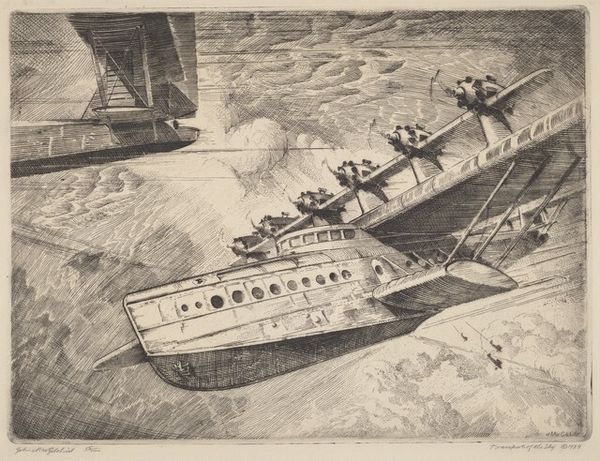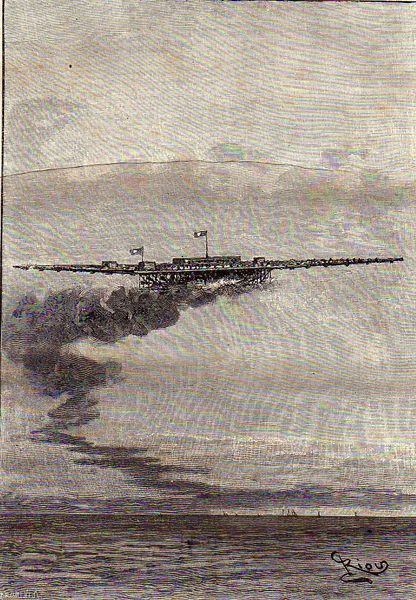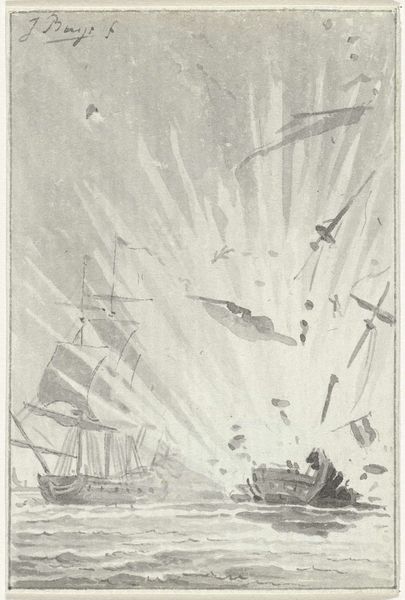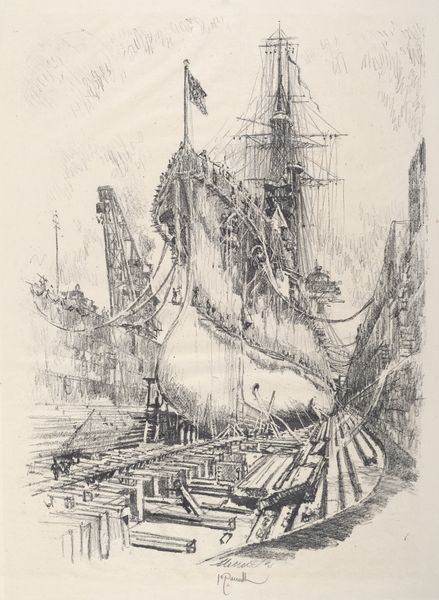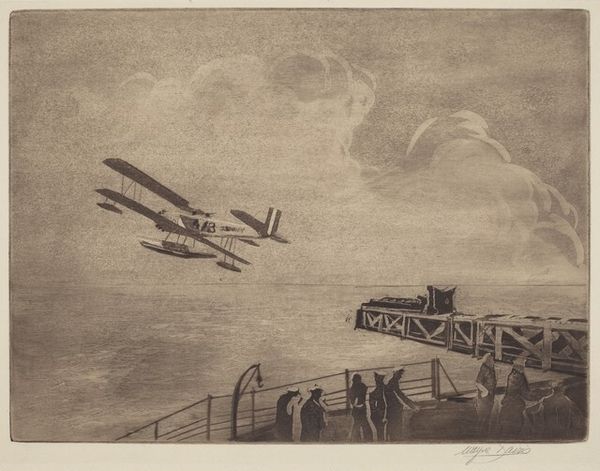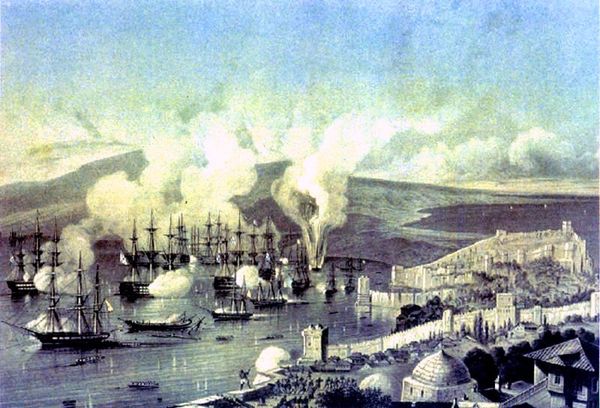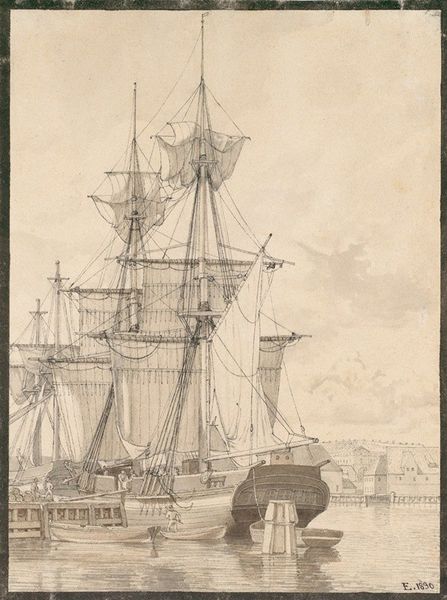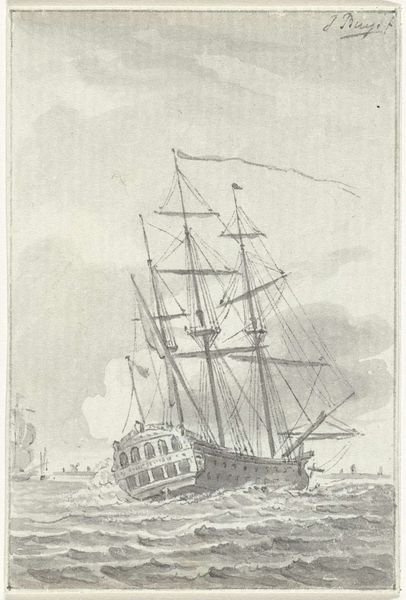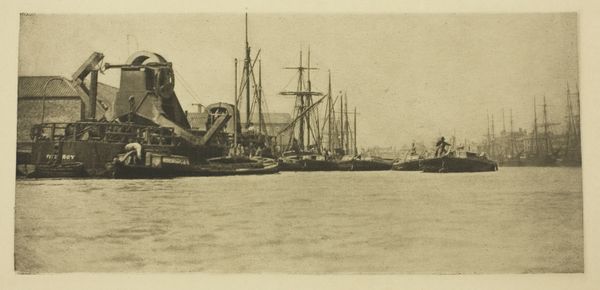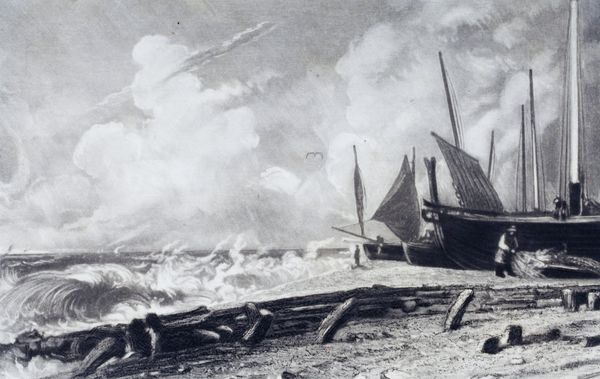
drawing, print, ink
#
drawing
# print
#
landscape
#
ink
#
cityscape
Copyright: Public domain
Curator: Welcome! We’re standing before a detailed drawing and print, an ink rendering with a slightly aged tone. It’s entitled "Story Le Rubis Du Grand-lama," attributed to Edouard Riou. Look at that fantastical flying machine! Editor: It's stunning! At first glance, I see a celebration of industrial ingenuity combined with anxieties of late 19th century social stratification, if not pure unadulterated awe. The airship hovering above such a dense crowd is powerful—and potentially problematic. Curator: Absolutely. It feels allegorical. Given Riou's body of work, largely defined by illustrations for adventure novels by Jules Verne, its easy to read this rendering through the same critical lens of scientific progress and its entanglement with imperial ambition. Consider how such technologies amplify existing power dynamics. Editor: It is incredibly dense with people; I find it difficult to disassociate with the context of class tensions bubbling under the surface in rapidly industrializing European cities at that time. It's very difficult to know without knowing its publishing context, whether it attempts to empower them or… Curator: To silence their voices? That’s astute. The subject of exploration—evident in both the architecture on the water, but more interestingly by what takes to the air—became inevitably tied to questions of social justice, who gets to rise above, quite literally in this piece. The ship above looms so high above what seems a neverending procession of working-class attendees in the bottom of the composition. Editor: The cityscape seems almost fictional in this imagining. The artist manages to cram ships, buildings, people into a limited space, which does make for compelling viewing, though not without making me reflect on how such urban spectacles mask real social inequity through public spectacle. The composition reinforces that sentiment. Curator: Perhaps. Though such questions about progress should remain central to dialogues about such period works. The piece does seem preoccupied by those dialogues—I can appreciate the level of engagement the print invites. Editor: And what a relevant question for us now, as we examine how tech further reinforces inequities across many societal structures today. That capacity for engagement might be one of the image's strongest features.
Comments
No comments
Be the first to comment and join the conversation on the ultimate creative platform.
